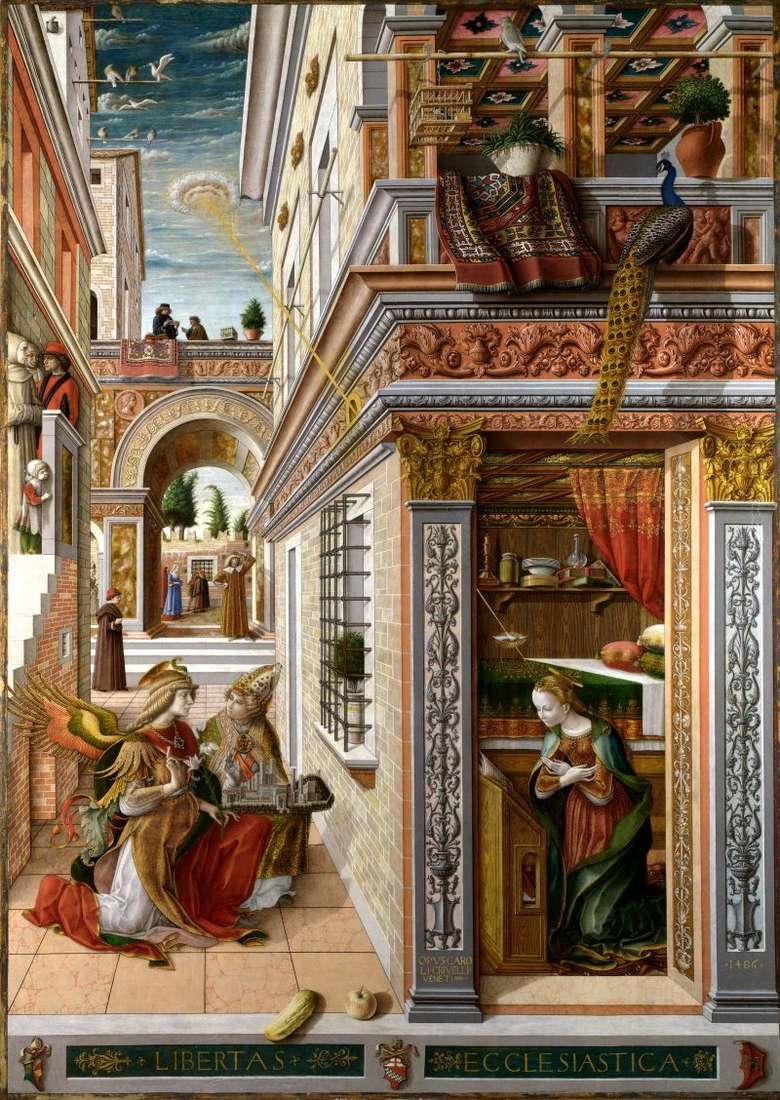
The Annunciation Carlo Crivelli is one of the recognized masterpieces of Italian painting of the late fifteenth century. This large colorful canvas, written in 1486 during the artist’s creative maturity, absorbed the main achievements of the Renaissance art. In its style, it resembles late Italian Gothic.
The picture is striking with its special festive decorative features, the exquisite design, the brightness of saturated colors, the rigor of the organization of the perspective. The painting depicts the rich, densely populated quarter of the city of Ascoli. The exact perspective image takes the view into the depth of the work, drawing attention to the beautifully drawn details of the second plan.
And in the foreground is the scene of the Annunciation itself. The presence of the patron Saint Emigda next to the archangel Gabriel and the inscription under the work “LIBERTAS ECCLESIASTICA” indicate that this painting not only reflects one of the main moments of the life of the Virgin Mary, but also declares the administrative autonomy of Ascoli, his freedom from the power of the papal throne.
Saint Emigd knelt beside the archangel and shows him the model of the city to which he is patronizing. Archangel looks interested in the Holy, but his main task is to convey to the Virgin Mary the Good News. One hand of the archangel is raised in a blessing gesture, in the other – a lily flower. The figure of the kneeling Gabriel is in front of the window of the room of the Virgin Mary, the interior of which can be examined in detail through an open door. Madonna knelt before the analoy, on which lies an open book, hands prayerfully folded on the chest. The ray of sun falling on her head and the dove above her speak of sending the Holy Spirit to her. The Virgin Mary in a luxurious red dress of a rich Italian of the 15th century, with a green cloak on her shoulders.
On the second floor above the room we see a peacock on the balustrade, vases with flowers, a patterned carpet, an empty cage, and a bird from the cage loosely sits on a rod on which the cage hangs. This complex hidden symbolism of everyday life is borrowed by the artist from the Dutch masters. It is interesting to consider each beautifully written fragment separately, but, combined together, they argue with each other on the importance of the image. Nevertheless, this eclectic work is one of the fine examples of Italian painting of the end of the XV century.
 Annunciation by El Greco
Annunciation by El Greco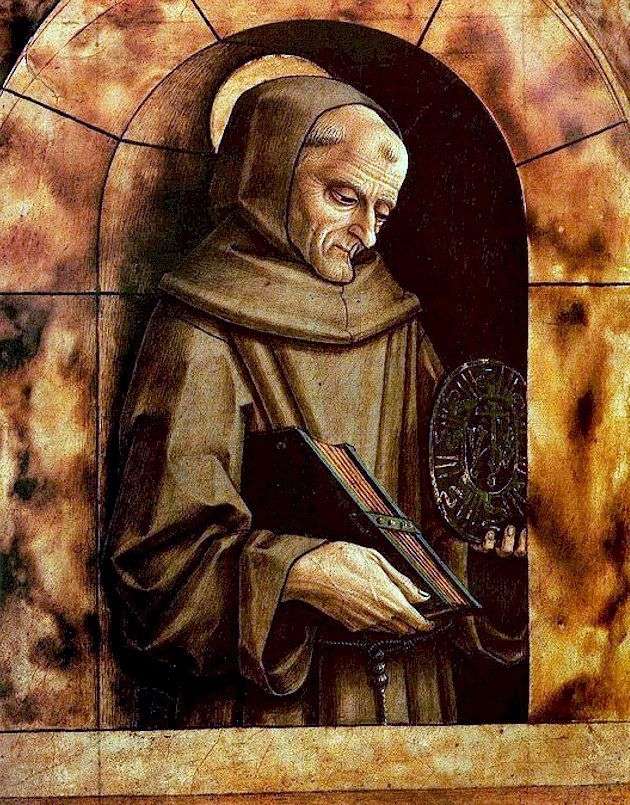 Saint Bernard of Siena by Carlo Crivelli
Saint Bernard of Siena by Carlo Crivelli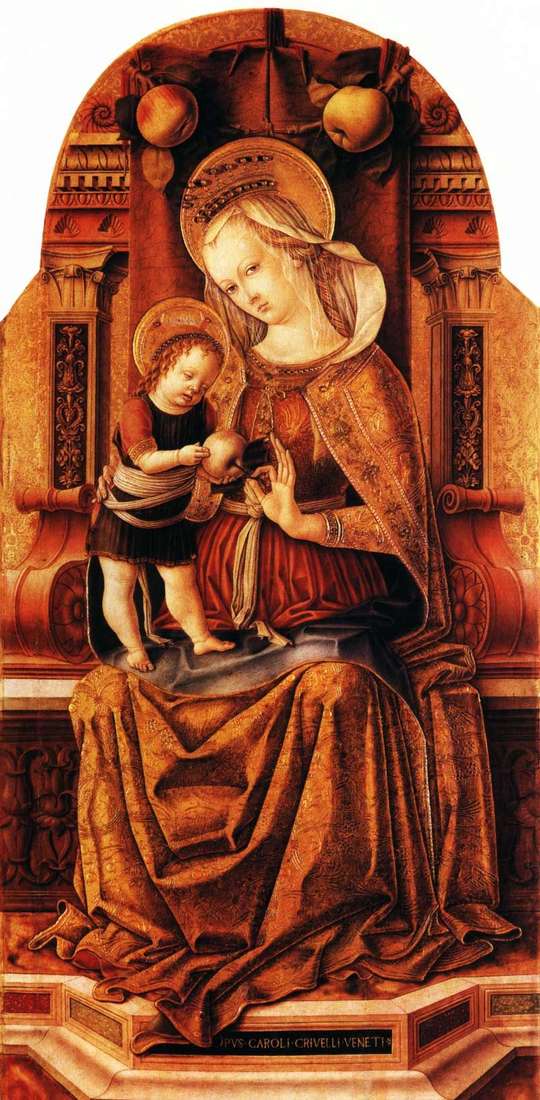 Maria with the baby on the throne by Carlo Crivelli
Maria with the baby on the throne by Carlo Crivelli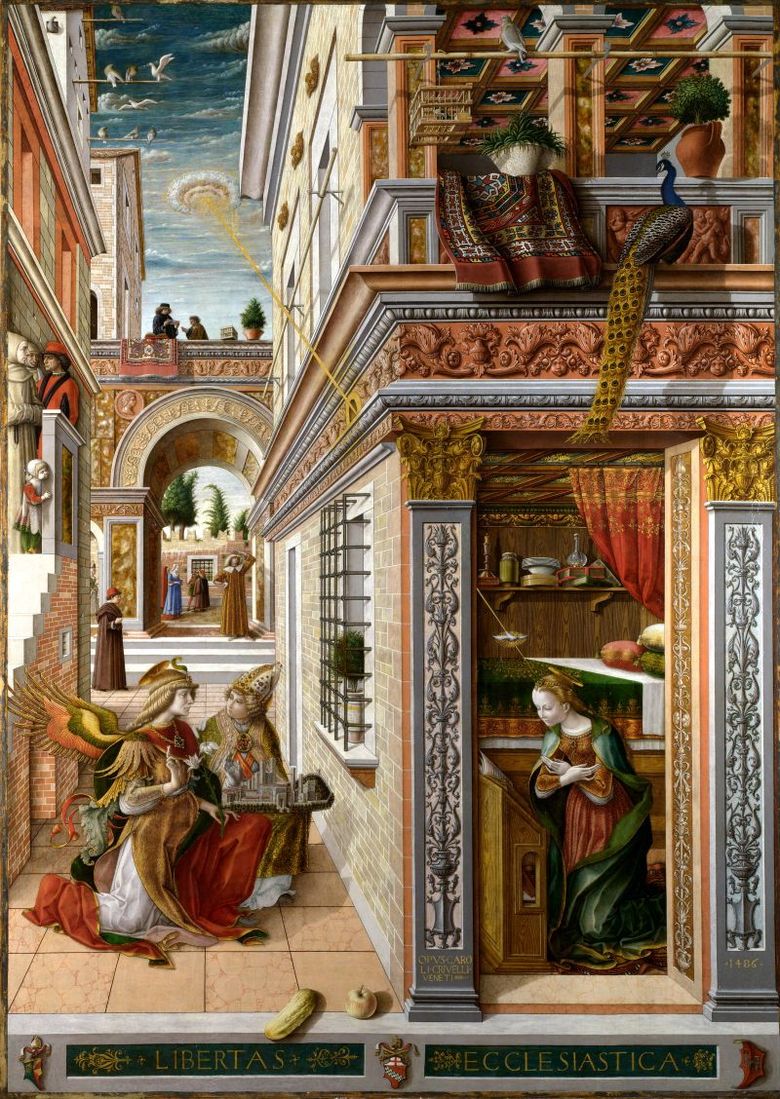 L’Annonciation – Carlo Crivelli
L’Annonciation – Carlo Crivelli Annunciation. Fresco by Bernardino Pinturicchio
Annunciation. Fresco by Bernardino Pinturicchio Annunciation by Leonardo Da Vinci
Annunciation by Leonardo Da Vinci Annunciation by Fra Beato Angelico
Annunciation by Fra Beato Angelico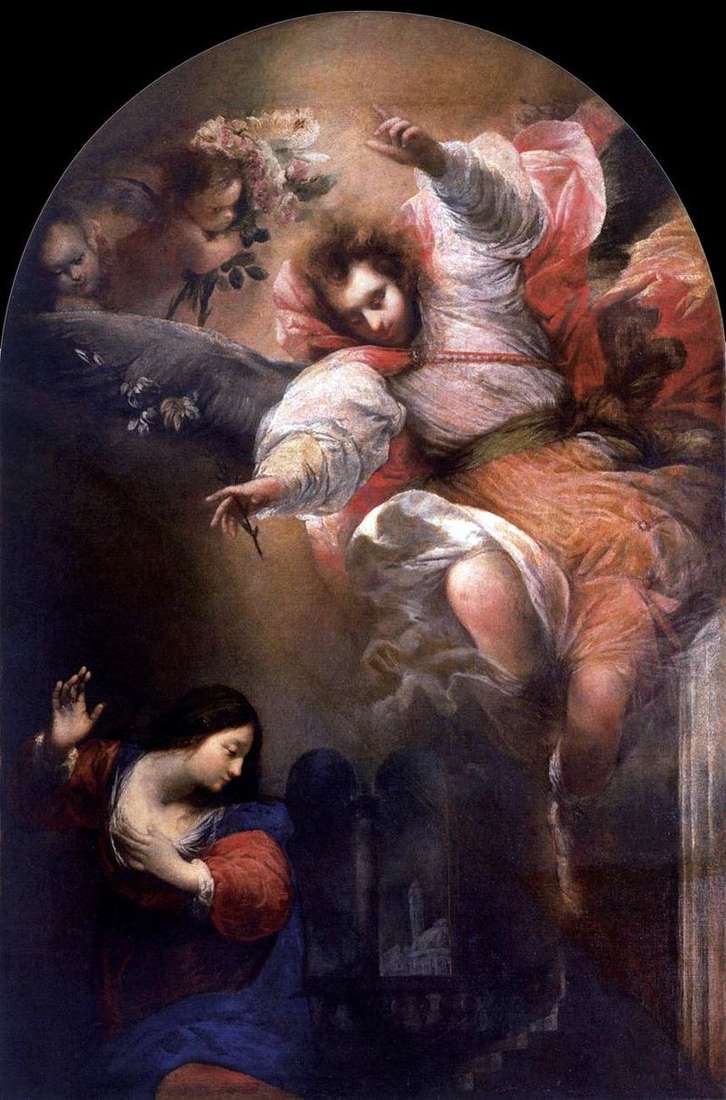 The Annunciation by Sebastiano Mazzoni
The Annunciation by Sebastiano Mazzoni